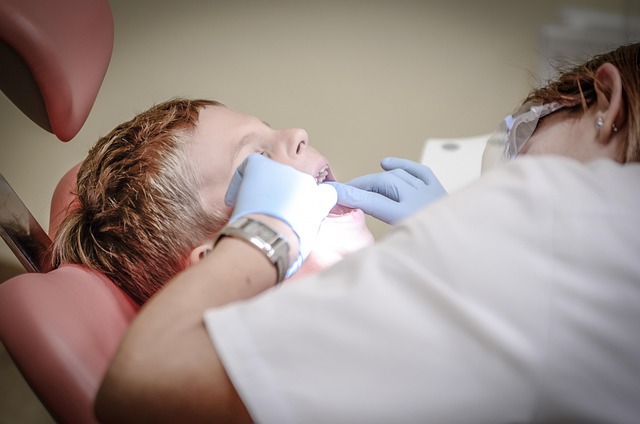General liability insurance is crucial for medical practices to manage risks from accidents, injuries, and property damage. It covers legal fees, settlement costs, and damages for claims related to medical mistakes, slip-and-falls, and treatment negligence. Understanding this coverage, identifying unique risks like staff mistakes and patient safety breaches, and staying compliant with regulations are essential. Robust risk management strategies include regular risk assessments, tailored mitigation plans, and comprehensive record-keeping. Clear policies and procedures reduce errors and liability claims. Regular reviews of insurance coverage ensure alignment with industry standards and regulatory requirements, protecting medical practices from financial burdens related to unforeseen incidents.
In the dynamic landscape of healthcare, medical professionals face unique risks that demand specialized protection. This article guides you through essential strategies to safeguard your practice from common pitfalls, focusing on general liability insurance for medical practices. From understanding foundational coverage to implementing tailored risk management techniques, each step ensures a robust defense against potential liabilities. By documenting processes, establishing clear policies, and regularly reviewing your general liability coverage, you can mitigate risks and foster a secure operational environment.
- Understand General Liability Insurance Basics
- Identify Risks Specific to Medical Practices
- Implement Risk Management Strategies
- Document and Maintain Detailed Records
- Establish Clear Policies and Procedures
- Regularly Review and Update Coverage
Understand General Liability Insurance Basics

General Liability Insurance is a crucial component of risk management for any medical practice. This type of insurance protects against potential claims and lawsuits that may arise from accidents, injuries, or property damage occurring on your premises. For medical practices, it’s especially important as patients often enter a vulnerable state, increasing the risk of malpractice and related litigation.
The policy covers medical mistakes, slip-and-fall incidents, or even alleged negligence in treatment. It provides financial protection by covering legal fees, settlement costs, and damages awarded to plaintiffs. Understanding this basic coverage is essential for practices to ensure they have adequate protection in place, as it can help maintain stability and avoid significant financial setbacks resulting from unexpected legal issues.
Identify Risks Specific to Medical Practices

Medical practices face a unique set of risks and challenges that require tailored insurance coverage. Among the most common are malpractice suits, which can result from misdiagnosis, treatment errors, or patient injuries. These risks demand comprehensive general liability for medical practices, covering not just financial losses but also legal defence fees.
Identifying specific risks is paramount. This includes considering factors like staff mistakes, equipment failure, and patient safety breaches. For instance, a miscommunication between healthcare providers can lead to incorrect treatment plans. Additionally, keeping up-to-date with regulations and industry best practices is crucial for risk management, as non-compliance can expose the practice to legal repercussions.
Implement Risk Management Strategies

Implementing robust risk management strategies is a cornerstone in safeguarding your medical practice from potential risks and liabilities. These strategies encompass a comprehensive approach to identify, assess, and mitigate risks that could impact the practice’s financial health and reputational integrity. Start by conducting thorough risk assessments to identify common hazards specific to your medical setting, such as slip-and-fall accidents, medical errors, or patient privacy breaches.
Once identified, develop tailored mitigation plans. This includes implementing strict protocol for infection control, ensuring proper training for staff on patient safety procedures, and adopting robust data security measures to protect sensitive patient information. Regularly review and update these strategies, as risks can evolve with changing regulations and technological advancements. Moreover, consider obtaining adequate general liability insurance for medical practices to safeguard against unforeseen claims, thereby fostering a resilient and secure operational environment.
Document and Maintain Detailed Records

Maintaining comprehensive records is an integral part of risk management for any medical practice. Detailed documentation ensures that all aspects of patient care, from initial consultation to treatment and post-op care, are accurately recorded. This not only facilitates smooth operations but also serves as a vital defense in case of legal issues or insurance claims related to general liability for medical practices.
Regularly updating and organizing these records is essential. It allows healthcare providers to quickly retrieve critical information, ensuring efficient patient management and reducing potential risks. Furthermore, detailed documentation can help establish a clear chain of events, which may be crucial in defending against allegations or lawsuits involving patient care.
Establish Clear Policies and Procedures

Establishing clear policies and procedures is a fundamental step in mitigating risks specific to medical practices. These guidelines serve as a compass, ensuring every interaction and process aligns with industry standards and legal expectations. By documenting protocols for patient intake, treatment administration, and emergency response, practices create a structured framework that reduces the likelihood of errors and subsequent liability claims.
Well-defined policies also foster transparency and accountability among staff members. When everyone follows established procedures, the risk of inconsistencies and potential hazards is significantly lowered. Moreover, clear documentation aids in general liability for medical practices by providing concrete evidence of due diligence, thereby enhancing the practice’s defense against legal challenges.
Regularly Review and Update Coverage

Regular reviews and updates of your coverage are essential for any medical practice, as the landscape of healthcare law and risk management can change rapidly. Staying current with industry standards and best practices ensures that your general liability for medical practices remains comprehensive and aligned with regulatory requirements. Schedule periodic assessments to verify that your policy limits, exclusions, and endorsements accurately reflect the unique risks associated with your clinic. This proactive step protects you from potential gaps in coverage during times of high risk or unexpected events.
By conducting these reviews, you can identify emerging trends and adjust your strategy accordingly. For instance, changes in patient demographics, new medical procedures, or evolving regulations might necessitate modifications to your liability coverage. Staying ahead of these developments allows for a more tailored approach to risk management, providing peace of mind and safeguarding your practice from financial burdens related to unexpected incidents.
